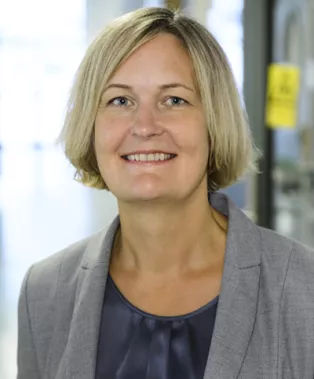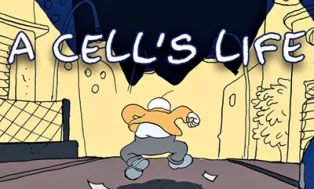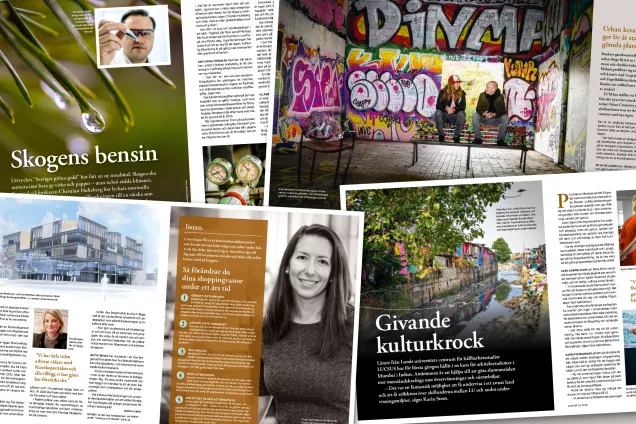Malin Parmar, Professor of developmental and regenerative neurobiology.
Some colleagues find this type of activity unserious and think that time should be dedicated to proper research. But these kinds of comments don’t have any effect on Malin Parmar.
“I have a large research team and have been working for some time now, including twice being awarded ERC grants, which proves that my working methods and my research are successful. For me, research does not become less serious just because you are having fun at the same time. External engagement is an important task for academia and the cartoon concept is an original and exciting way of approaching it”.
Most reactions have been positive. People who have read the cartoon have come up to her wanting to further discuss her research.
“For example, when I was a guest on a science radio programme, the sound technician and I started to talk about cartoons and then about my research. We have never done that before, although I have been there several times. So the cartoon suddenly opened up the possibility of a discussion that perhaps would never otherwise have happened. On top of that, I learnt a little about music history.”
Illustration: Alessandro Tota
When Malin Parmar first got the offer of creating a cartoon about her research, she was uncertain whether she had time for the project. But her research administrator insisted and when she became one of the first to be selected, she started looking forward to testing a new way of communicating her research. All her public events are essentially centred on explaining what a stem cell is, that not all stem cells are alike, and what they can be used for.
“In many countries, people are opposed to using stem cells from foetuses, for example, so I want to increase knowledge and hope that it contributes to ensuring that those concerned take informed decisions.”
However, although she works actively to disseminate her research, in most contexts she usually reaches an audience that is already engaged – patients, their relatives, politicians or an interested general public.
“It is easy to rake them in, whereas it is more of a challenge to reach those who don’t already have an interest. And this cartoon can be read by people with no special interest in science.”
As a child, she subscribed to children’s comics Bamse and Donald Duck, as well as reading all the cartoon books available at the library. But she is not up to date with the culture of graphic novels for adults, except for Liv Strömquist, who is a great favourite.
“But my interest in cartoons hasactually increased during the course of this project, so now I think I will be reading more of them.”
The ERC comics project has also opened up other ways of reaching different groups. One consequence is that the research team participated in the art exhibition The Invisible Body, that aims to arouse curiosity about medical research.
From the beginning, it was perhaps Lund University’s photographer Kennet Ruona who got Malin Parmar to realise the importance of photographs, and how a good image could open up opportunities for more space in the media. She has therefore had photographs taken of her team in the lab on several occasions, to be able to offer good image material to media editors.
“Of course it takes time and money, but it is important. Sometimes it’s the same thing here, that many researchers think it’s a bit unserious and that we shouldn’t assign any resources to photos.”
For Malin Parmar, who is now an established and successful researcher, it is easy to ignore her colleagues’ comments.
“In one of the divisions, the staff barely take a coffee break because it is considered unserious to sit and talk about this and that around the coffee table. Inour division, it’s the opposite – we have prohibited automatic coffee machines and use an old-fashioned filter-coffee device instead, to force people to socialise during their coffee breaks. This is not a waste of time – meetings generate new ideas.”
Text: Åsa Hansdotter
Photo: Kennet Ruona
MORE ABOUT Malin Parmar
Name: Malin Parmar, professor of developmental and regenerative neurobiology.
Age: 44
Researches: How to re-programme skin cells into neurons, which can potentially be used to treat Parkinson’s disease, among other things.
Family: Husband and two children aged 9 and 13, as well as pet lizard Leo.
At LU since: Doctoral degree in 2003, started research team in 2007.
Believes: that you can have fun while still being ultraserious. Don’t buy other people’s ideas about what is serious but form your own instead – and be daring.
ERCcOMICS
Over four years, 16 cartoon stories are to be created about 16 research projects funded by the European Research Council, ERC. The project began in 2015 and will run until 2019. www.erccomics.com





